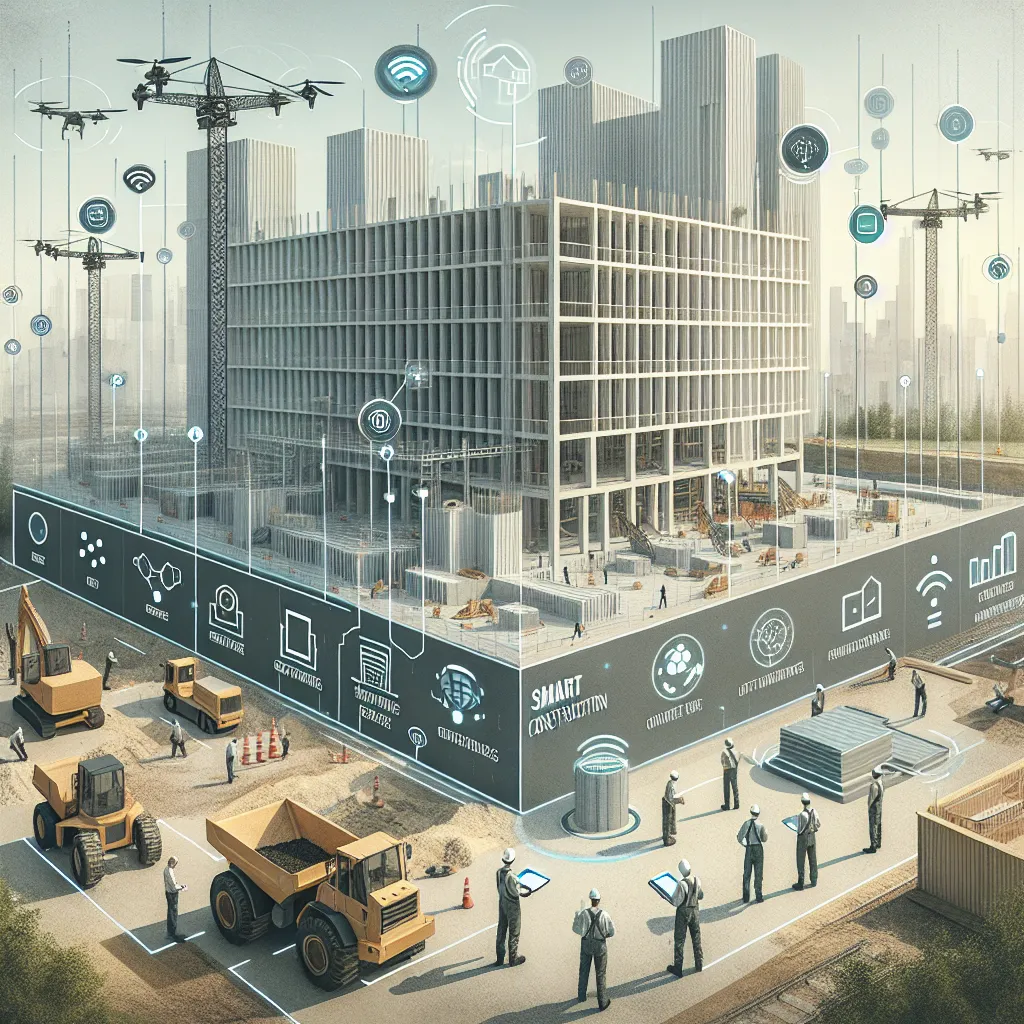How to Implement a Smart Construction Site with IoT Technology
 Quantum Cyber Solutions
Quantum Cyber Solutions
Published on
Wednesday, February 7, 2024
How to Implement a Smart Construction Site with IoT Technology
==================================================================
Authors

Name
Con Tech News
Twitter
How to Implement a Smart Construction Site with IoT Technology
With the rise of the Internet of Things (IoT), construction sites are evolving from chaotic, risk-laden zones into sophisticated, smart environments. Imagine a construction site where every tool, machine, and worker is interconnected, effortlessly exchanging data to enhance safety, efficiency, and productivity. This isn’t a futuristic dream—it’s a present-day reality, and we're about to dive into how you can implement a smart construction site with IoT technology!
1. Understanding the Basics of IoT in Construction
What is IoT?
The Internet of Things refers to the network of physical objects—devices, vehicles, buildings, and more—which are embedded with sensors, software, and other technologies to connect and exchange data with other devices and systems over the internet.
Why IoT in Construction?
In the construction industry, IoT can dramatically reduce operational costs and downtime, enhance safety, and improve project management through real-time data analytics.
2. Key Components of IoT Construction Sites
To effectively implement IoT on a construction site, you need to focus on these key components:
Sensors and Devices
Environmental Sensors
- Temperature and Humidity Sensors: Monitor site conditions to prevent material damage and ensure worker safety.
- Air Quality Sensors: Detect harmful gases and particulates to maintain a healthy working environment.
Equipment Sensors
- Vibration Sensors: Monitor the performance of machinery to predict maintenance needs and avoid breakdowns.
- GPS Trackers: Keep track of equipment location in real-time, preventing theft and optimizing utilization.
Networking Infrastructure
To handle the massive influx of data generated by IoT devices, a robust networking infrastructure is essential.
- Wi-Fi: Suitable for smaller sites or in areas with less interference.
- LPWAN (Low Power Wide Area Network): Ideal for large construction sites with extensive coverage requirements.
Data Management and Analytics
Collecting data is just the first step. Utilizing this data to gain insights and make informed decisions is where the magic happens.
- Cloud Computing: Provides scalable storage solutions and powerful processing capabilities.
- Big Data Analytics: Helps in analyzing vast amounts of data to identify patterns and predict potential issues.
3. Steps to Implement IoT on Your Construction Site
Step 1: Assessment and Planning
- Conduct a thorough assessment of your site’s current state, identifying areas where IoT can add the most value.
- Define your goals. Whether it's enhancing safety, improving efficiency, or reducing costs, having clear objectives will guide your implementation.
Step 2: Choosing the Right IoT Devices
- Select sensors and devices tailored to your specific needs. For example, if safety is a priority, focus on environmental and wearable sensors.
- Ensure compatibility and integration capabilities with your existing systems.
Step 3: Setting Up the Network Infrastructure
- Choose the appropriate networking technology based on your site’s size and requirements.
- Establish secure data transfer protocols to protect sensitive information from breaches.
Step 4: Data Management Setup
- Implement a robust cloud computing solution to handle data storage and processing.
- Set up data analytics tools to turn raw data into actionable insights.
Step 5: Training and Deployment
- Train your workforce on the new IoT systems, emphasizing the importance of data for safety and efficiency.
- Gradually deploy IoT devices, starting with high-impact areas, and scale up based on feedback and results.
4. Case Studies: Success Stories
Case Study 1: Skanska’s Smart Site
Skanska, one of the world’s leading project development and construction groups, implemented IoT technology across their sites. They used environmental sensors to monitor air quality and wearable devices to track worker movements, leading to a significant reduction in workplace incidents.
Case Study 2: Caterpillar’s IoT Revolution
Caterpillar used IoT sensors to monitor the health of their heavy machinery. The real-time data allowed predictive maintenance, which reduced equipment downtime by 50%, resulting in substantial cost savings and increased project efficiency.
5. Future Trends and Innovations
The future of IoT in construction holds exciting possibilities:
- Autonomous Vehicles: Self-driving machinery can handle repetitive tasks, reducing labor costs and increasing precision.
- Augmented Reality (AR): AR helmets can provide real-time data overlays, helping workers see hidden structures and make more informed decisions.
- Blockchain for IoT Security: Enhancing data security and transparency, blockchain technology could revolutionize IoT data management.
Conclusion
Implementing IoT technology on your construction site is no longer a question of "if" but "how soon." By embracing IoT, you can transform your construction operations into a well-oiled, smart-machine—boosting efficiency, enhancing safety, and paving the way for a future where construction is synonymous with innovation. So, gear up and lead your site into the smart era!
Stay tuned for more exciting insights and innovations in the world of technology and construction! If you have any questions or would like to share your own experiences with IoT in construction, drop a comment below. Let's build the future together!
🚀🏗️
Discuss on Twitter • View on GitHub
Tags
Previous Article
The Role of Autonomous Vehicles in Construction Material Transport
Next Article
The Future of Construction Workforce Training: Technology and Beyond
Subscribe to my newsletter
Read articles from Quantum Cyber Solutions directly inside your inbox. Subscribe to the newsletter, and don't miss out.
Written by
